If you’re like me you’ve had 101 arguments about hip hop with 1001 different people. Arguments are inevitable once questions like “Who’d be the best rapper if B.I.G. were still here?” and “What the heck was Nas thinking with Nastrodamus?” come up.
Undoubtedly, the most pervasive question in Hip Hop, the one that has been around since its earliest days, is: what is the difference between “mainstream” and “underground” rap music?
Of course, these are two terms that every rap fan has in their vocabulary; but I’d bet you a value-meal that most people don’t have a solid understanding of what the terms mean, much less the difference between them. Most casual hip hop fans would probably say something like the following:
Mainstream rap music sells; underground rap music doesn’t.
Seems plausible. Certainly, mainstream artists like those on the cover of XXL and Ozone Magazine sell more units than the “underground” artists that line their pages, right?
Not so fast.
Using that definition, it would be difficult to classify artists like Lupe Fiasco, whose “underground” career bears a strong resemblance to his post Food & Liquor “mainstream” career. And how about Talib Kweli, Pete Rock, and the long list of artists who have had sales success; yet never come close to mainstream acceptance?
It seems then, that there is more to the mainstream/underground distinction than just dollars. Perhaps being “mainstream” has to do with one’s message. After all, there is the Common misconception (pun-intended) that underground artists “keep it real” and refuse to sell-out. Somehow, underground artists tend to be perceived generally as deeper, more skilled and more authentic than rappers on TRL. Even artists themselves sometimes espouse this idea, as does Jay-Z on The Black Album:
“If skills sold, truth be told, I’d probably be, lyrically Talib Kweli. Truthfully, I wanna rhyme like Common Sense (but I did 5 mil); I ain’t been rhymin’ like Common since.” – “Moment of Clarity”
But this, too is an over-simplification. There are plenty of examples of brilliant albums (and artists) that are as mainstream as it gets; and just as many examples of underground rap music that is just plain trash.
What is needed, then, is a more precise measure of what constitutes “mainstream”. So, I decided to ask the question: just how mainstream is mainstream Hip Hop?
To answer it, I chose two major indicators of mainstream American culture: 1) celebrity rankings, and 2) Nielsen Soundscan figures.
Celebrity Ranking
We live in a society where Jamie Lynn Spears, Anna Nicole Smith, David Beckham and Kim Kardashian are more recognizable names than Ben Bernanke, Julian Bond, Mumia Abu-Jamal, and Ted Turner. Celebrities dominate more than the nightly news; they dominate our national conciousness.
Therefore, one indicator of just how mainstream Hip Hop is is a look at how celebrities from the world of Hip Hop compare to other celebrities in terms of popularity. Recently the folks at MSN (the folks that bring you Windows Live) created a celebrity ranking system that works by comparing the number of online searches for Hollywood figures, radio personalities, fashionista, athletes, politicians, and the like. Users can then view rankings that show each celebrity’s popularity status relative to other celebrities.
The results may surprise you.
As of this writing:
• Britney Spears is ranked #1.
• Only one rapper (Lil Wayne, #9) made the Top 10.
• Akon (#17) is more popular than Oprah Winfrey (#30).
• Michael Jackson is one spot above Janet Jackson (#49 & #50 respectively)
Overall, within the top 100 there are 20 celebrities associated with Hip Hop and/or R&B (including Vida Guerra but excluding Kid Rock). That means that only approximately 20% of society’s star power is attributable to Hip Hop.
Nielsen Soundscan
Nielsen Soundscan is an information system that tracks sales of music and music video products throughout the United States and Canada. Sales data from point-of-sale cash registers is collected weekly from over 14,000 retail, mass merchant and non-traditional (on-line stores, venues, etc) outlets. Weekly data is compiled and made available every Wednesday. Nielsen Soundscan clients include all major and most independent record companies, distribution companies, artist managers, booking agents, concert promoters, venue owners, traditional retailers, online retailers and digital delivery companies. Soundscan began tracking sales data for Billboard on March 1, 1991. MTV, Vh1, CMT and all major media regularly use Nielsen Soundscan data as well.
According to the Recording Industry of America (RIAA), the list of the Top Ten best selling albums since 1991 does not include a single Hip Hop release. Its list of top selling artists has 15 artists ahead of Mariah Carey (at 61.5 million copies sold). Tupac Shakur is the first pure Hip Hop entry, at #43 with 36.5 million copies sold, followed by R. Kelly at #48 with 33 million. Eminem is #69 with 27 million, Jay-Z is #75 with 26 million, and the Beastie Boys round out the top 100 with 22 million.
That’s seven out of 100, and two of those (Mariah and the Beastie Boys) have catalogs that are mostly non-rap.
Therefore, it would seem that mainstream Hip Hop perhaps isn’t so mainstream after all. Based on these two indicators, it could be argued that although Hip Hop is in the main stream of America’s conciousness, it certainly isn’t a major contributor. Mainstream Hip Hop isn’t mainstream because of its influence on America; its mainstream because of America’s influence on it.
I Don’t Buy It
From this perspective, underground hip hop now seems even further below mainstream Hip Hop than it did before! This is why I’d argue that the only real distinction between mainstream and underground Hip Hop is in the mind of the listener. After all, rap music is art, and therefore subject to interpretation by those that encounter it. The American way of life is predicated upon capitalism (indeed I’m writing this article for a check) and as a result much of our mindset is based on consumerism.
We perceive a tremendous difference between 50 Cent and Mos Def (despite their striking similarities) because one is more prone to consumerism than the other. Some Hip Hop music is more easily packaged and sold because it resonates with the American ethos of the almighty dollar. Some, not so much. To the degree that it fits that bill, we call it mainstream. That is the only difference: not quality, not message, and not profundity; but perception. Get Your Mind Right: It is mainstream if it can be commercialized (and it all is being commercialized). Period.
The brilliant artist and thinker Andy Warhol once said: “Why do people think artists are special? It’s just another job.”
As far as Hip Hop goes, I’d have to agree.
Endorsement Deals
If Hip Hop was born in the late 1970s, then it hit the block selling when it was only seven years old. In 1986, rap icons Run-DMC (guided by the Geppetto of Hip Hop himself, Russell Simmons) made “My Adidas” a song about, well Adidas. The brand actually was the natural sneaker choice of the group, and the song quickly became a hit. Legend has it that during a tour stop on their Raising Hell Tour in Madison Square Garden, (Rev) Run cut the music and commanded everyone to take off a shoe and put it in the air.
Question: Why would anyone do that? Answer: Because Adidas reps were in the building (invited by Simmons), and Russell wanted them to literally see how powerful product-placement in rap songs could be. A sold-out arena obliged, raising thousands of brand-new shell-toes into the air; raising with them the awareness in corporate circles that Hip Hop had tremendous unbridled marketing potential. According to The Village Voice, Run-D.M.C. received $1.5 million dollars to endorse Adidas.
That was a little over two decades ago. In that time rappers have gone from relatively subtle mentions of products in their songs to blatant harping on them. And, like the true ballers in the NBA and NFL, they are cashing in. Here are some notable examples:
-In 2002 Reebok signed Jay-Z to design and endorse his own signature shoe. The launch of the “S. Carter Collection” in June 2003 was telling: The shoes sold completely out in three days.
-In 2003, on the heels of his mega-hit “Air-Force One’s” Nike and Nelly agreed on a one-year endorsement deal to release a limited-edition sneaker called the “Air Derrty.” Nelly would later go on to sign another endorsement deal with Reebok.
-In 2004, Bad Boy & Sean John CEO Diddy did an endorsement deal with Guthy-Renker, makers of Proactiv Solution. In 2007, he inked a multi-year deal to develop Ciroc vodka.
-In 2005 rap star Xzibit signed an endorsement deal with athletic footwear manufacturer Dada to produce shoes. The line was named “Pimp Your Kicks,” alluding to Xzibit‘s role as host of the MTV show Pimp My Ride.
-In March 2006 Lil Wayne, Lupe Fiasco, Mike Jones and Daddy Yankee made their debuts as the new faces of Reebok. The artists signed deals with the company and appeared in Reebok ads. They also introduced co-branded footwear and, in some cases, apparel lines.
-Just last year Pharrell Williams of the Neptunes was signed by Pepsi to design a custom Pepsi can as part of the company’s “Design Our Can” promo-campaign.
– In 2006 Jay-Z signed on with Anheuser-Busch as an official rep for Budweiser Select. (Ironically, Jay’s first commercial ever was for Heineken in 2003 after the release of the Blueprint 2.1.)
Commercials
One of the more interesting aspects of American life is the fact that we actually like watching commercials. Television commercials are, of course, the reason why network television shows exist. On some level though, one has to respect the pure marketing genius that creates the illusion that you are watching Law & Order: SVU with commercial interruptions; as opposed to watching commercials interrupted by detectives Benson and Stabler.
Hip Hop has certainly made its mark on television commercials; here are a couple of my personal favorites, in no particular order.
Boost Mobile ad, starring Kanye, Ludacris, and The Game (2006)
Kanye, Luda, and Game kick verses to each other over their Boost Mobile phones. Game is in L.A., Luda is in the A and Kanye is in the Chi; but the result is a pretty decent soundtrack. In fact, it’s better than most of the stuff I hear on the radio these days. Brilliant.
Pepsi gas station ad, starring Beyonce (2003)
This one shows Beyonce walking up to a gas station attendant to ask for directions. As the guy looks up at her with her hair flowing all around her he’s unable to do more than squeak in response; which she of course understands perfectly. After all she is Beyonce.
Diet Pepsi Max‘s “Nod” commercial starring Missy Elliott, LL Cool J, Busta Rhymes and Macy Gray (2008)
An extended parody of the Night at the Roxbury head-nod phenomenon, in which the whole world goes from nodding-off with boredom to nodding in rhythm, thanks to Diet Pepsi Max. Definitely some over-acting in this one, but still a winner.
Pepsi cool cans promotion, starring Young MC (1989)
Young MC dropped some truly classic ish like: Cool cans are coming so don’t be afraid/ If you get lucky then you might get paid. And To be cool and somewhat respectable/ pick up Pepsi in these hype receptacles. And I’ll bet you don’t remember those Taco Bell commercials… I’m Young MC with a story to tell/ I just got a free cup from Taco Bell. Classic.
Gap peace love Gap campaign, starring Common (2006)
Horrible commercial, but it’s on my favorite list because of its irony.
“I might’ve failed to mention that this chick was creative/ But once the man got to her he altered her native/ Told her if she got an image and a gimmick/ that she could make money, and she did it like a dummy/ Now I see her in commercials, she’s universal
She used to only swing it with the inner-city circle…“
– Common Sense, “I Used to Love H.E.R.”
Self-Promotion
In the final analysis, the inherent commercialism in hip hop has created a world in which artists must be as marketable as they are talented. Artists now have to “brand” themselves in order to be commercially successful. Again, some of my favorites:
“Yeahhhh”- Lil Jon
“What!?!” – Lil Jon
“Okay!” – Lil Jon
“We The Best!” – DJ Khaled
“It’s Ya Boy!” – Jay-Z
“O K-K-K” …- Lil Scrappy
“G-g-g-g Unit!” – 50 Cent
“Dipset, Dipset, Dipset…” – The Diplomats
“Crack!” – Fat Joe
“We all we got!” – Nelly
Not only does Hip Hop advertise for corporate America, mainstream hip hop operates like corporate America. And no wonder…now you’re average rapper with a record deal is selling more than just records. “Artists” will continue to peddle alcohol, automobiles, sneakers, technology, vitamin water, and whatever else they can, all in the name of Hip Hop. But Get Your Mind Right: Hip Hop (to those that know) is much more than marketing campaigns and dollar signs.
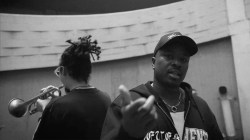



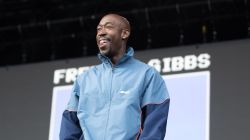
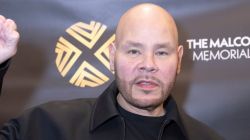

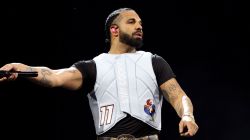

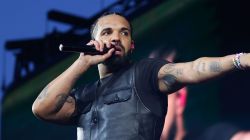
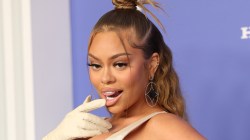
Fuck all that soundscan shit. What does that prove. Plain an simple about what makes an artist mainstream. If your in the studio trying to make records w/ the intent for them to get on the radio then your a mainstream artist. Mos Def isn’t doing that. 50 cent is. Simple son. That A&R telling you to sound like this or say that taking creative control away from you and u do it then ur mainstream.
I tried having this conversation with my wife. I asked her if she heard of EPMD or K.R.S. One. She said no. They were underground is what I told her.She said that the only reason they were is because they couldn’t make it big. She doesn’t get it. Neither the person who wrote this aritcle
http://best-rapper-alive.net/ best rapper alive!
YouTube Gordon Gilmore. ………. CT unsigned artist looking for exposure
Zappa, has a lot to say about ‘milly vanilli-ism’ as well, music does.
The “Fake list of who sold what” for example, Nielsen et al aren’t very good metrics, for quality, they’re quantative, decent piece, just because something sells doesn’t make it good or bad.
But does, potentially, change how an artist’s work is viewed or considered, Zappa’s definition seems to hold: “the mainstrem is found for you and shown to you, you have to find the underground” he regarded this as the main difference.
Nowadays the internet has people just making for the sake of it, Black Knights and a great number of decent artists exist, still both ‘commercial’ and ‘making a living’.
Then there’s the whole sell-out thing, making a living is one thing, selling Reebok is another, personally.
Very good information
You shouldn’t be discussing hip hop @hiphopdx. You have no idea what you are even talking about. Underground hip hop is just wait it sounds like. It’s “underground” and not for the media to see, love or hear. Underground artists don’t make music etc because their goal is to be rich and famous. They do it because it is just something they love doing. They do it to represent hip hop culture and earn respect from the culture unlike rappers on B.E.T who rap just to gain fans, money and fame and to win awards and tear down the culture. Also, a real underground rapper doesn’t just respect rap. They respect all the elements of hip hop and in most cases can do at least two of the 4 elements of hip hop. Notice that hip hop began as something positive (for urban black and latino youth to respect each other in the streets) Yet ever since ghetto gangster mainstream rappers got popular, all the “harmless” and “non thuggish” elements (breaking, graffiti, and turntablism) was frowned upon, and the culture was portrayed as all about being negative (shooting and killing people, drug abuse, etc). However, gangster rap was steal real hip hop, and that also went underground. Trap music nowadays is a sign that mainstream rap is about over. Even trap fans know not to call trap music “hip hop” because trap music is basically just trash music, but there are some ok ones like T.I. and Ludacris.
How about this we like what we like kids can have their mumble rap it’s nothing to get mad over. Only thing we should change is like Rock music mumble and trap music should have their own lane like rock music they have punk a heavy metal death metal and so on why don’t we do the same with hip hop even the different styles of rockers dress differently so hip should do the same Trap and mumble rappers can keep their flower pants long dress looking thirty and ugly shoes like Kanyea shoes and we can keep our more masculine look.
I think you should put something about XXX Tentation
He is the best rapper alive. XXX TENTATION
lies what kind of life you living